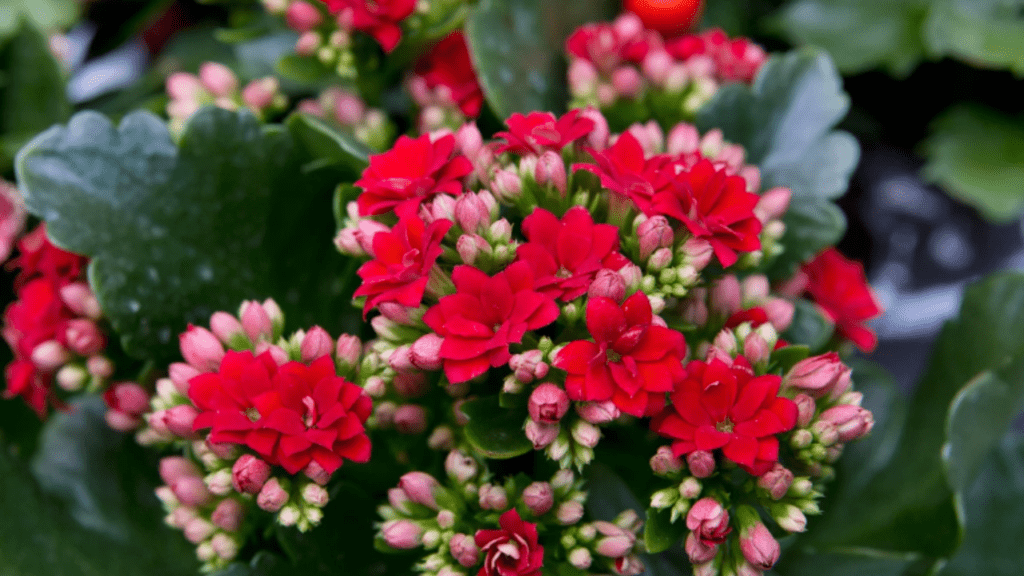
Ultimate Guide to Growing and Caring for Kalanchoe Pinnata
Kalanchoe Pinnata, also known as the air plant or life plant, is a popular succulent known for its unique and beautiful appearance. In this ultimate guide, we will cover everything you need to know about growing and caring for this unique plant, including watering, sunlight, soil, and propagation. Whether you’re a beginner or an experienced gardener, this article will provide you with all the information you need to successfully care for your Kalanchoe Pinnata.
When it comes to watering, it’s important to allow the soil to dry out between waterings to prevent root rot. Air Plant prefers bright, indirect sunlight, so be sure to place it in a location with plenty of natural light. As for soil, a well-draining cactus or succulent mix is ideal for this plant.
Propagation of Kalanchoe Pinnata is relatively easy, as it can be grown from cuttings or by separating offsets from the main plant. With the right care and attention, your air Plant will thrive and add a touch of natural beauty to your home or garden.
Table of Contents
ToggleUnderstanding Kalanchoe Pinnata
Plant Overview: Description and origin of Kalanchoe Pinnata.
Kalanchoe Pinnata, also known as the air plant or life plant, is a succulent plant that is native to Madagascar. It is a popular houseplant due to its unique appearance and easy care requirements. The plant features thick, fleshy leaves that are green with reddish-brown spots on the edges. It produces clusters of small, tubular flowers that can range in color from red to orange.
The plant is often used in traditional medicine for its healing properties and is also known for its air-purifying abilities. It is a low-maintenance plant that prefers well-draining soil and bright, indirect sunlight. Overwatering should be avoided, as the plant is susceptible to root rot.
Propagation of air Plant can be done through stem cuttings or by separating offsets from the main plant. With the right care, this plant can thrive and add a touch of natural beauty to any home or garden.
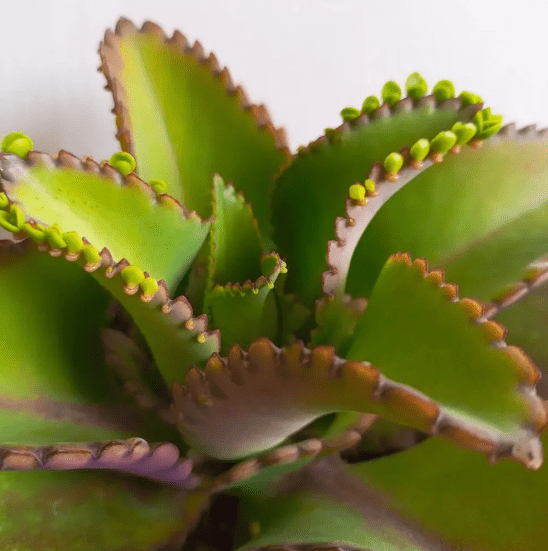
Common Names: Other names for Kalanchoe Pinnata (e.g., Miracle Leaf, Air Plant).
Kalanchoe Pinnata, also known as the Miracle Leaf or Air Plant, is a unique and versatile plant. It is characterized by its thick, fleshy leaves that have green color with reddish-brown spots on the edges. This plant produces clusters of small, tubular flowers that can vary in color from red to orange, adding a pop of color to any space. In addition to its aesthetic appeal, Air Plant is also known for its healing properties and air-purifying abilities. It is often used in traditional medicine for various health benefits and is a popular choice for those looking to improve air quality in their homes. As a low-maintenance plant, it thrives in well-draining soil and prefers bright, indirect sunlight. It is important to avoid overwatering, as the plant is susceptible to root rot. Propagation of Kalanchoe Pinnata can be done through stem cuttings or by separating offsets from the main plant, making it easy to expand your collection. With the right care and attention, this plant can thrive and bring natural beauty into any home or garden.
Unique Characteristics: Distinctive features, such as its ability to produce plantlets.
Kalanchoe Pinnata is a unique plant with distinctive features, such as its ability to produce plantlets. This plant is known for its clusters of small, tubular flowers that come in a range of colors, from red to orange, adding a pop of color to any space. In addition to its aesthetic appeal, Air Plant is also known for its healing properties and air-purifying abilities. It is often used in traditional medicine for various health benefits and is a popular choice for those looking to improve air quality in their homes. As a low-maintenance plant, it thrives in well-draining soil and prefers bright, indirect sunlight. It is important to avoid overwatering, as the plant is susceptible to root rot. Propagation of Kalanchoe Pinnata can be done through stem cuttings or by separating offsets from the main plant, making it easy to expand your collection. With the right care and attention, this plant can thrive and bring natural beauty into any home or garden. Its unique ability to produce plantlets adds to its appeal and makes it a fascinating addition to any plant collection.
Benefits of Kalanchoe Pinnata
Medicinal Uses: Traditional and modern medicinal applications.
Kalanchoe Pinnata, also known as the air plant or life plant, has been used in traditional medicine for its healing properties. It is known for its ability to treat a variety of health issues, including coughs, colds, and skin conditions. The plant is also used in modern medicine for its anti-inflammatory and antimicrobial properties. It is rich in antioxidants and has been used to treat inflammation, infections, and even as a natural remedy for diabetes and hypertension. In addition to its medicinal uses, Air Plant also has air-purifying abilities, making it a popular choice for indoor spaces. It is important to note that while the plant has been used for its medicinal properties, it is always best to consult with a healthcare professional before using any plant-based remedies. Overall, Kalanchoe Pinnata is a versatile plant that brings both beauty and health benefits to any environment.
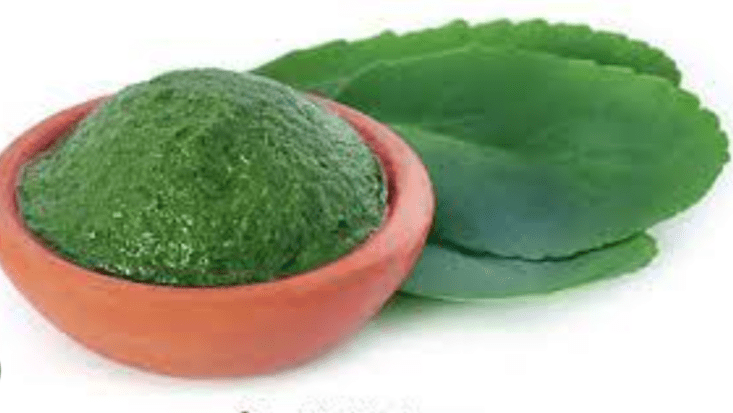
Air Purification: How Kalanchoe Pinnata contributes to a healthier indoor environment.
Kalanchoe Pinnata, also known as the air plant or life plant, has numerous benefits when it comes to air purification in indoor environments. This plant is known for its ability to remove harmful toxins and pollutants from the air, making it a great addition to any indoor space. The plant’s ability to remove volatile organic compounds (VOCs) from the air, such as formaldehyde and benzene, makes it an excellent choice for improving indoor air quality. In addition to its air-purifying abilities, Kalanchoe Pinnata also releases oxygen at night, making it a great choice for improving air quality while you sleep. This plant is low-maintenance and thrives in indoor environments, making it an easy and effective way to improve the air quality in your home or office. Overall, Air Plant is a great choice for anyone looking to create a healthier indoor environment.
Ornamental Value: Its aesthetic appeal and decorative uses.
Kalanchoe Pinnata, also known as the air plant or life plant, has numerous benefits when it comes to air purification in indoor environments. This plant is known for its ability to remove harmful toxins and pollutants from the air, making it a great addition to any indoor space. The plant’s ability to remove volatile organic compounds (VOCs) from the air, such as formaldehyde and benzene, makes it an excellent choice for improving indoor air quality. In addition to its air-purifying abilities, Kalanchoe Pinnata also releases oxygen at night, making it a great choice for improving air quality while you sleep. This plant is low-maintenance and thrives in indoor environments, making it an easy and effective way to improve the air quality in your home or office. Overall, Air Plant is a great choice for anyone looking to create a healthier indoor environment. In addition to its air-purifying benefits, Kalanchoe Pinnata also has ornamental value due to its aesthetic appeal and decorative uses, making it a great addition to any indoor space for both health and visual appeal.
How to Grow Kalanchoe Pinnata
Propagation Methods
Leaf Cuttings: Step-by-step guide to propagating from leaves.
Kalanchoe Pinnata, also known as the air plant or life plant, is a popular choice for indoor environments due to its air-purifying abilities. This plant is known for its ability to remove harmful toxins and pollutants from the air, making it an excellent addition to any indoor space. It is particularly effective at removing volatile organic compounds (VOCs) such as formaldehyde and benzene, which can have negative effects on air quality. Additionally, Kalanchoe Pinnata releases oxygen at night, making it a great choice for improving air quality while you sleep. This low-maintenance plant thrives in indoor environments and is an easy and effective way to create a healthier indoor environment. In addition to its air-purifying benefits, Kalanchoe Pinnata also adds aesthetic value to indoor spaces, making it a great choice for both health and visual appeal. If you’re interested in growing Kalanchoe Pinnata, one propagation method is through leaf cuttings, and there are step-by-step guides available for this process.
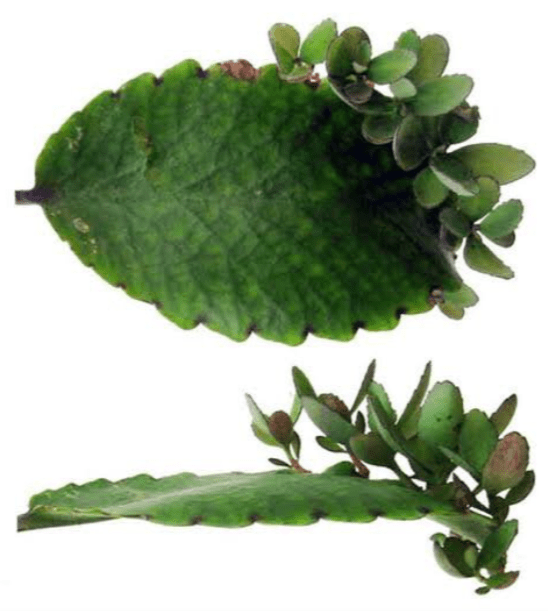
Plantlets: Using plantlets to grow new Kalanchoe Pinnata plants.
Kalanchoe Pinnata, also known as the air plant or life plant, is a popular choice for indoor environments due to its air-purifying abilities. This plant is known for its ability to remove harmful toxins and pollutants from the air, making it an excellent addition to any indoor space. It is particularly effective at removing volatile organic compounds (VOCs) such as formaldehyde and benzene, which can have negative effects on air quality. Additionally, Kalanchoe Pinnata releases oxygen at night, making it a great choice for improving air quality while you sleep. This low-maintenance plant thrives in indoor environments and is an easy and effective way to create a healthier indoor environment. In addition to its air-purifying benefits, Kalanchoe Pinnata also adds aesthetic value to indoor spaces, making it a great choice for both health and visual appeal. If you’re interested in growing Kalanchoe Pinnata, you can use plantlets to produce new plants. Plantlets are small plant structures that can be used to grow new plants. You can separate the plantlets from the main plant and replant them in soil to grow new Kalanchoe Pinnata plants. This can be a fun and rewarding way to expand your indoor plant collection and continue to enjoy the air-purifying benefits of this wonderful plant.
Planting Kalanchoe Pinnata
Soil Requirements: Best soil types and mixtures.
Kalanchoe Pinnata is a versatile plant that can thrive in a variety of soil types and mixtures. It generally prefers well-draining soil that is rich in organic matter. A good mixture for Kalanchoe Pinnata would be a combination of potting soil, perlite, and sand to ensure proper drainage. It’s important to avoid overly moist soil or soil that becomes waterlogged, as this can lead to root rot and other issues. Additionally, fertilizing the soil with a balanced fertilizer during the growing season can help promote healthy growth and blooming. Overall, providing the right soil type and mixture for Kalanchoe Pinnata is crucial for its overall health and success as an indoor plant.
Pot Selection: Choosing the right pot for optimal growth.
When planting Kalanchoe Pinnata, it’s important to consider the soil requirements for optimal growth. This plant is versatile and can thrive in a variety of soil types and mixtures. However, it generally prefers well-draining soil that is rich in organic matter. A good mixture for Kalanchoe Pinnata would be a combination of potting soil, perlite, and sand to ensure proper drainage. It’s important to avoid overly moist soil or soil that becomes waterlogged, as this can lead to root rot and other issues.
In addition to the soil mixture, pot selection is also crucial for the plant’s growth. Choosing the right pot for optimal growth is important. A pot that is slightly larger than the plant’s root system is ideal, as it allows room for growth while preventing the soil from staying too wet. It’s also important to ensure that the pot has good drainage to prevent water from accumulating at the bottom.
Overall, providing the right soil type and mixture, as well as choosing the right pot, is crucial for the overall health and success of Kalanchoe Pinnata as an indoor plant. By taking these factors into consideration, you can ensure that your plant thrives and continues to bloom beautifully.
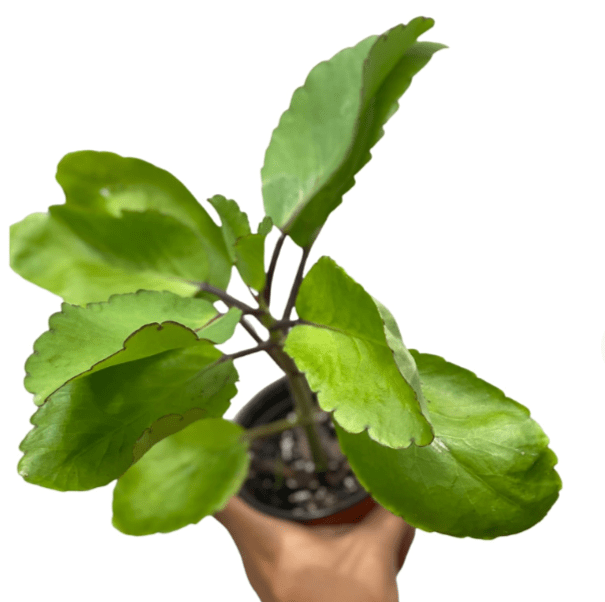
Planting Process: Detailed instructions for planting Kalanchoe Pinnata.
The planting process for Kalanchoe Pinnata requires careful attention to detail to ensure the plant’s successful growth. Firstly, it’s important to use a well-draining soil mixture that allows for proper aeration of the roots. This can be achieved by using a mix of potting soil, perlite, and coarse sand. It’s important to avoid overly moist soil or soil that becomes waterlogged, as this can lead to root rot and other issues. In addition to the soil mixture, pot selection is also crucial for the plant’s growth. Choosing the right pot for optimal growth is important. A pot that is slightly larger than the plant’s root system is ideal, as it allows room for growth while preventing the soil from staying too wet. It’s also important to ensure that the pot has good drainage to prevent water from accumulating at the bottom. Overall, providing the right soil type and mixture, as well as choosing the right pot, is crucial for the overall health and success of Kalanchoe Pinnata as an indoor plant. By taking these factors into consideration, you can ensure that your plant thrives and continues to bloom beautifully.
Caring for Kalanchoe Pinnata
Light Requirements
Kalanchoe Pinnata, also known as the air plant or cathedral bells, requires plenty of light to thrive. It is best to place it in a location where it can receive bright, indirect sunlight for most of the day. If you are growing it indoors, placing it near a south or west-facing window is ideal. However, be cautious of direct sunlight, as it can cause the leaves to become scorched. On the other hand, if you are growing it outdoors, make sure to place it in a spot that receives partial sunlight. This means it should be shaded for part of the day, especially during the hottest hours. By providing the right amount of light, you can ensure that your Kalanchoe Pinnata continues to grow and thrive.
Watering Guidelines
When it comes to watering your Kalanchoe Pinnata, it’s important to find a balance. Overwatering can lead to root rot, while underwatering can cause the plant to wilt and dry out. It’s best to water the plant when the top inch of soil feels dry to the touch. When watering, make sure to thoroughly moisten the soil, but allow any excess water to drain out of the bottom of the pot. It’s also important to avoid getting water on the leaves, as this can lead to rot and disease. During the winter months, when the plant is not actively growing, you can reduce the frequency of watering. By following these watering guidelines, you can help your Kalanchoe Pinnata to thrive and stay healthy.
Soil and Fertilization
When it comes to caring for your Kalanchoe Pinnata, it’s important to pay attention to the soil and fertilization. This plant thrives in well-draining soil, so make sure to use a potting mix specifically designed for succulents or cacti. You can also add perlite or sand to the soil to improve drainage. As for fertilization, it’s best to use a balanced liquid fertilizer during the growing season, about once every month. Be sure to dilute the fertilizer to half strength to prevent root burn. During the winter months, when the plant is not actively growing, you can skip the fertilization. By providing the right soil and fertilization, you can help your Kalanchoe Pinnata to grow and flourish.
Pruning and Maintenance
Pruning and maintenance are important aspects of caring for your Kalanchoe Pinnata. Regular pruning can help to keep the plant healthy and looking its best. You can remove any dead or yellowing leaves, as well as any spent flowers. This will help to promote new growth and prevent disease. Additionally, you may need to repot your plant every 2-3 years to ensure that it has enough room to grow. When it comes to maintenance, be sure to check the plant for any signs of pests or disease regularly. If you notice any issues, take action immediately to prevent them from spreading. By staying on top of pruning and maintenance, you can help your Kalanchoe Pinnata to thrive and continue to beautify your home.
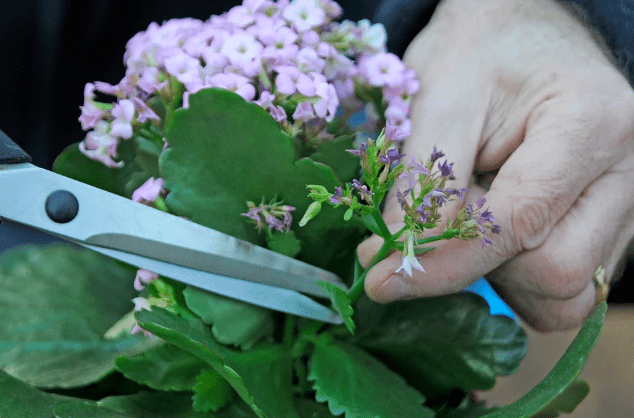
Pests and Diseases
Pests and Diseases can be a common issue when it comes to plant care. It’s important to keep an eye out for any signs of pests, such as aphids or spider mites, and take action to prevent them from causing damage to your plants. Regular maintenance, such as pruning and repotting, can also help to keep your plants healthy and reduce the risk of disease. If you notice any signs of pests or disease, be sure to take action immediately to prevent them from spreading to other plants. Using natural remedies or insecticidal soaps can help to control pests without harming the plant. It’s important to stay vigilant and address any issues as soon as they arise to keep your plants healthy and thriving.
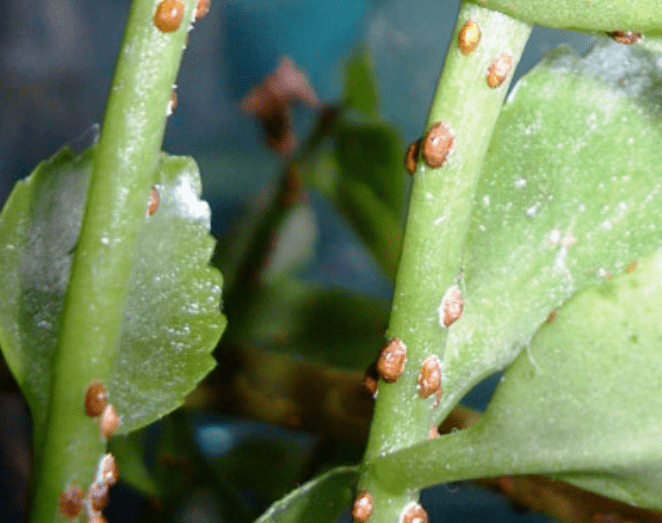
Kalanchoe Pinnata in Different Climates
Growing Indoors vs. Outdoors: Pros and cons of indoor and outdoor growth.
When it comes to plant care, whether you choose to grow your plants indoors or outdoors, there are pros and cons to consider. When growing plants indoors, you have more control over the environment, such as temperature and humidity, which can be beneficial for certain plant species. Indoor plants also tend to be less susceptible to pests and diseases, as they are not exposed to outdoor elements. However, indoor plants may require more maintenance, such as regular watering and pruning, and they may not receive as much natural sunlight as outdoor plants.
On the other hand, outdoor plants can benefit from natural sunlight and fresh air, which can promote healthy growth and flowering. Outdoor plants also have the advantage of natural pest control, as beneficial insects and birds can help to keep pests at bay. However, outdoor plants are more susceptible to weather conditions and may require more frequent watering and protection from extreme temperatures.
In conclusion, both indoor and outdoor plant growth have their own set of advantages and disadvantages. It ultimately depends on the specific needs of the plant species and your personal preferences as a gardener. It’s important to consider factors such as light, temperature, and pest control when deciding where to grow your plants.
Climate Considerations: Adapting care routines based on climate.
When it comes to caring for plants, the climate can play a significant role in determining the care routines needed. Indoor plants may require more maintenance, such as regular watering and pruning, as they may not receive as much natural sunlight as outdoor plants. On the other hand, outdoor plants can benefit from natural sunlight and fresh air, which can promote healthy growth and flowering. Additionally, outdoor plants have the advantage of natural pest control, as beneficial insects and birds can help keep pests at bay. However, outdoor plants are more susceptible to weather conditions and may require more frequent watering and protection from extreme temperatures. It’s important to consider these factors when deciding where to grow your plants. Ultimately, the specific needs of the plant species and your personal preferences as a gardener should guide your decision. Adapting care routines based on the climate will help ensure the health and success of your plants.
Decorating with Kalanchoe Pinnata
Indoor Decoration Ideas: Creative ways to incorporate Kalanchoe Pinnata into home decor.
Kalanchoe Pinnata is a versatile and beautiful plant that can be incorporated into your home decor in creative ways. One idea is to use it as a centerpiece on a dining table or as a focal point on a mantle or shelf. You can also use it to add a touch of greenery to a bathroom or bedroom. Another idea is to plant Kalanchoe Pinnata in a decorative pot and place it on a windowsill to add a pop of color and life to your space. Additionally, you can create a beautiful terrarium using Kalanchoe Pinnata and other small plants to create a mini indoor garden. This plant is low-maintenance and adds a touch of natural beauty to any room. With some creativity and imagination, you can find many ways to incorporate Kalanchoe Pinnata into your indoor decor.
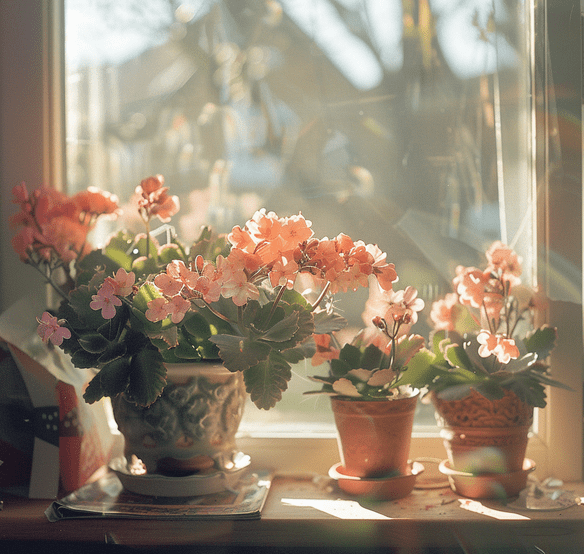
Outdoor Landscaping: Using Kalanchoe Pinnata in garden landscapes.
Kalanchoe Pinnata, also known as air plant or cathedral bells, is a beautiful and versatile plant that can be used in outdoor landscaping to enhance the beauty of your garden. Its vibrant green leaves and colorful flowers make it a great addition to any garden landscape. You can plant Kalanchoe Pinnata in flower beds, rock gardens, or even use it as a border plant to add a pop of color to your outdoor space. It is a low-maintenance plant that thrives in full sun and well-drained soil, making it an ideal choice for outdoor landscaping. You can also use Kalanchoe Pinnata in hanging baskets or decorative pots to create a stunning outdoor display. With its ability to attract butterflies and hummingbirds, it can also add a touch of wildlife to your garden. Overall, Kalanchoe Pinnata is a versatile and beautiful plant that can be used in a variety of creative ways to enhance the beauty of your outdoor landscape.
In conclusion, growing and caring for Kalanchoe Pinnata requires attention to detail and regular maintenance. It’s important to provide the right amount of sunlight, water, and well-draining soil for optimal growth. Additionally, propagation techniques can help expand your collection of these beautiful plants. By following the tips and guidelines in this guide, you can ensure the health and vitality of your Kalanchoe Pinnata plants for years to come.
Frequently asked questions And Answer
Kalanchoe Pinnata, also known as the air plant or life plant, is a succulent plant known for its medicinal properties and beautiful foliage.
Kalanchoe Pinnata can be grown from seeds or cuttings. It prefers well-draining soil and bright, indirect sunlight.
Water your Kalanchoe Pinnata sparingly, allowing the soil to dry out between waterings. Overwatering can lead to root rot.
Kalanchoe Pinnata thrives in warm temperatures and can tolerate some heat, but it is sensitive to frost and should be protected from cold temperatures.
Indoors, make sure to place your Kalanchoe Pinnata in a spot with plenty of sunlight and provide it with well-draining soil.
Yes, Kalanchoe Pinnata has been used in traditional medicine for its anti-inflammatory, antimicrobial, and wound-healing properties.
Kalanchoe Pinnata can be propagated from leaf or stem cuttings. Simply let the cuttings callus over and then plant them in well-draining soil.
Kalanchoe Pinnata is generally resistant to pests and diseases, but overwatering can lead to issues such as root rot. Keep an eye out for mealybugs and scale insects.
